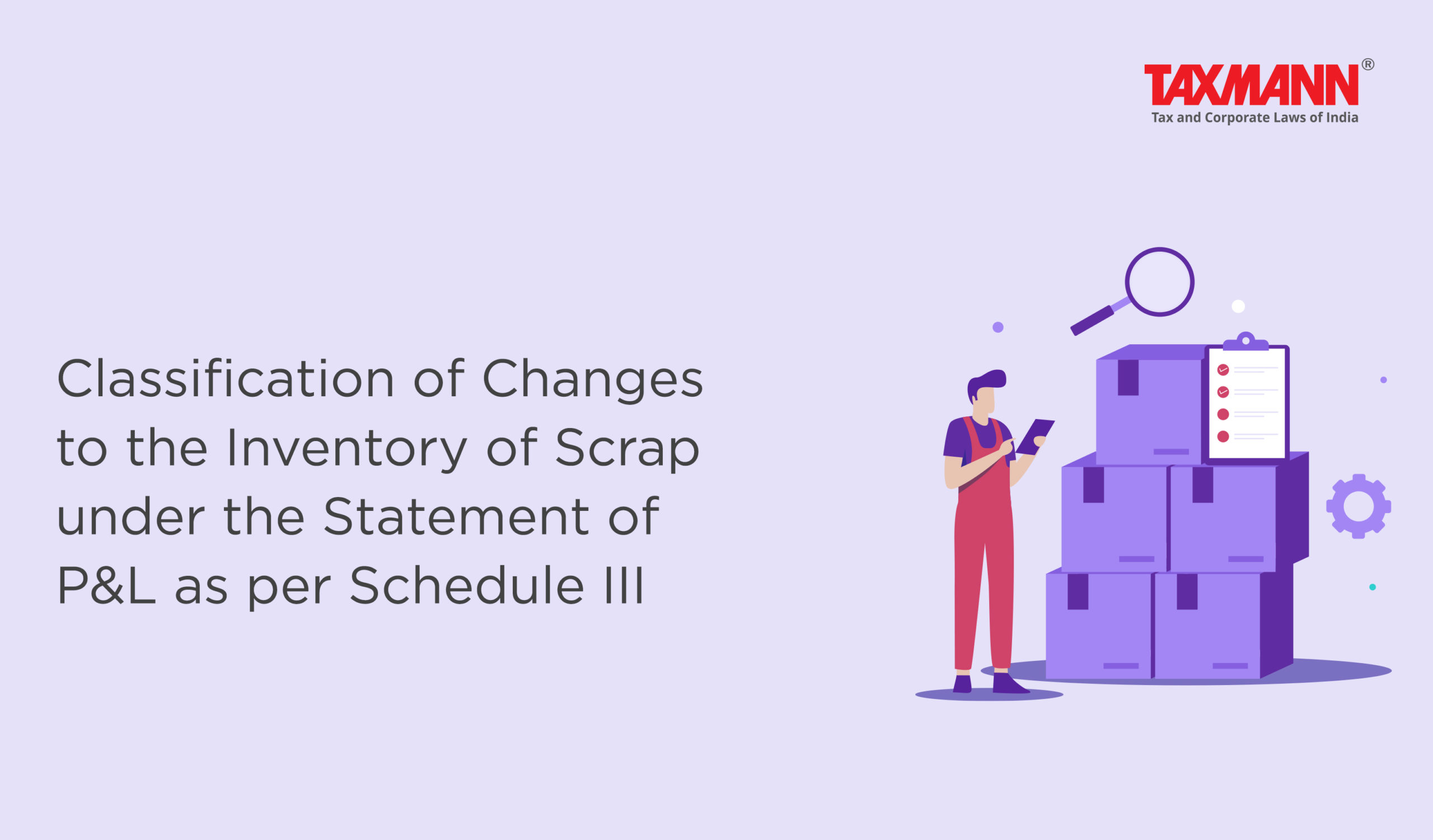Classification of Changes to the Inventory of Scrap under the Statement of P&L as per Schedule III
- Blog|News|Account & Audit|
- < 1 minute
- By Taxmann
- |
- Last Updated on 14 June, 2023

A company engaged in manufacturing of super alloys generates a significant amount of scrap. It has been estimated that 95% of the generated scrap can be reused in the production process, while the remaining 5% is sold in the open market. The company recognizes the net increase or decrease in scrap stock as “Consumption of raw material-internally generated scrap” and is categorized under “Cost of Material Consumption.” Such classification of change in the inventory of scrap sometimes results in the understatement of raw material consumption. The company wants to affirm its classification and thus approached the EAC of ICAI for their input on the same.
The Expert Advisory Committee has noted that the cost of intermediates or components which are internally manufactured and transferred from one department to another within the same entity should be excluded from the cost of materials consumed. Thus, only purchased and not internally manufactured and transferred intermediates can be included in the ‘cost of materials consumed’.
On the basis of the above, the Expert Advisory Committee (EAC) is of the opinion that the company shall classify internally generated scrap, used in the subsequent production process as “Work-in-Progress” and should present it under ‘Changes in inventories of finished goods, work-in-progress and stock-in-trade’ under ‘Expenses’
Click Here To Read The Full Story
Disclaimer: The content/information published on the website is only for general information of the user and shall not be construed as legal advice. While the Taxmann has exercised reasonable efforts to ensure the veracity of information/content published, Taxmann shall be under no liability in any manner whatsoever for incorrect information, if any.

Taxmann Publications has a dedicated in-house Research & Editorial Team. This team consists of a team of Chartered Accountants, Company Secretaries, and Lawyers. This team works under the guidance and supervision of editor-in-chief Mr Rakesh Bhargava.
The Research and Editorial Team is responsible for developing reliable and accurate content for the readers. The team follows the six-sigma approach to achieve the benchmark of zero error in its publications and research platforms. The team ensures that the following publication guidelines are thoroughly followed while developing the content:
- The statutory material is obtained only from the authorized and reliable sources
- All the latest developments in the judicial and legislative fields are covered
- Prepare the analytical write-ups on current, controversial, and important issues to help the readers to understand the concept and its implications
- Every content published by Taxmann is complete, accurate and lucid
- All evidence-based statements are supported with proper reference to Section, Circular No., Notification No. or citations
- The golden rules of grammar, style and consistency are thoroughly followed
- Font and size that’s easy to read and remain consistent across all imprint and digital publications are applied



 CA | CS | CMA
CA | CS | CMA
